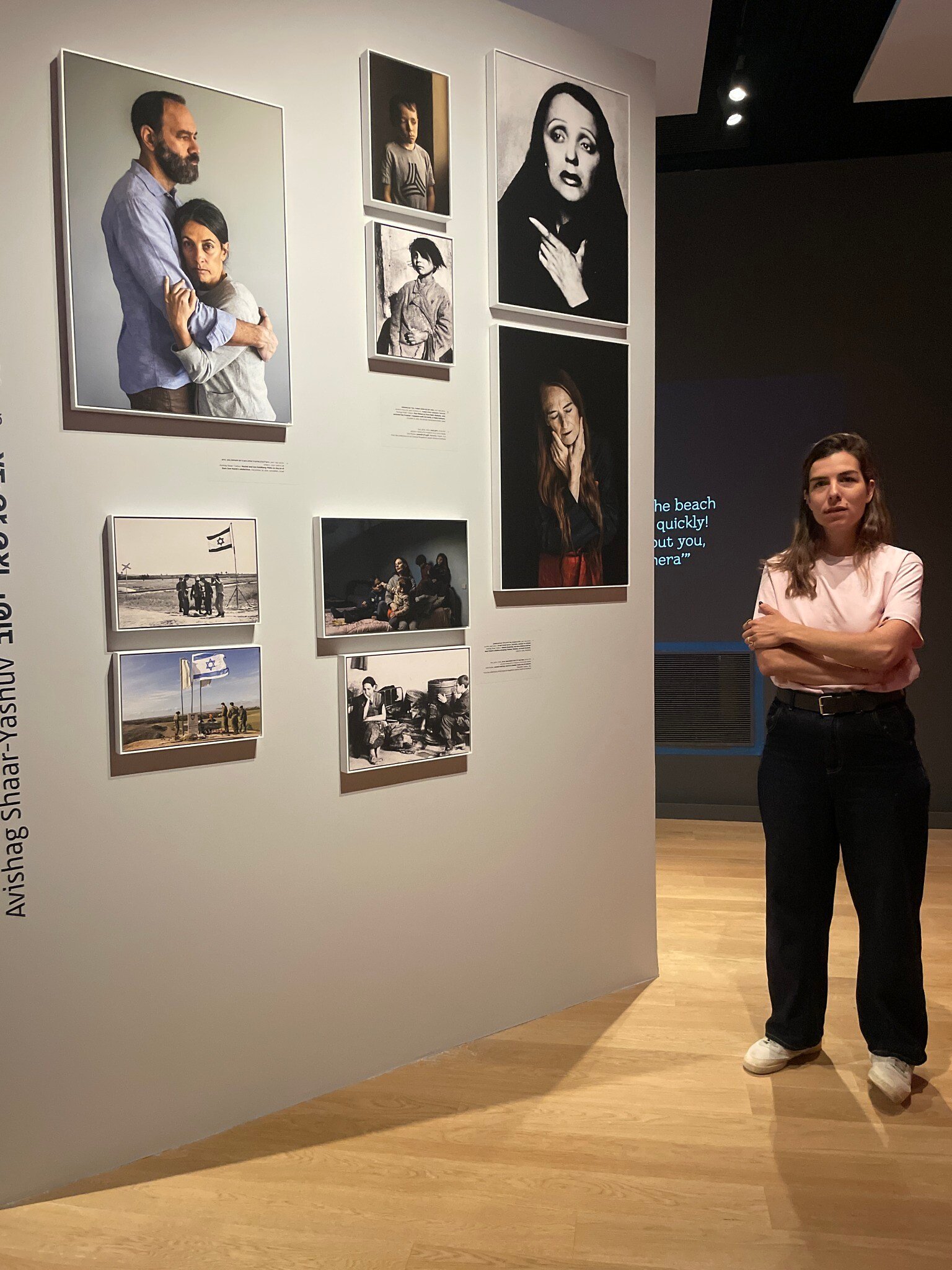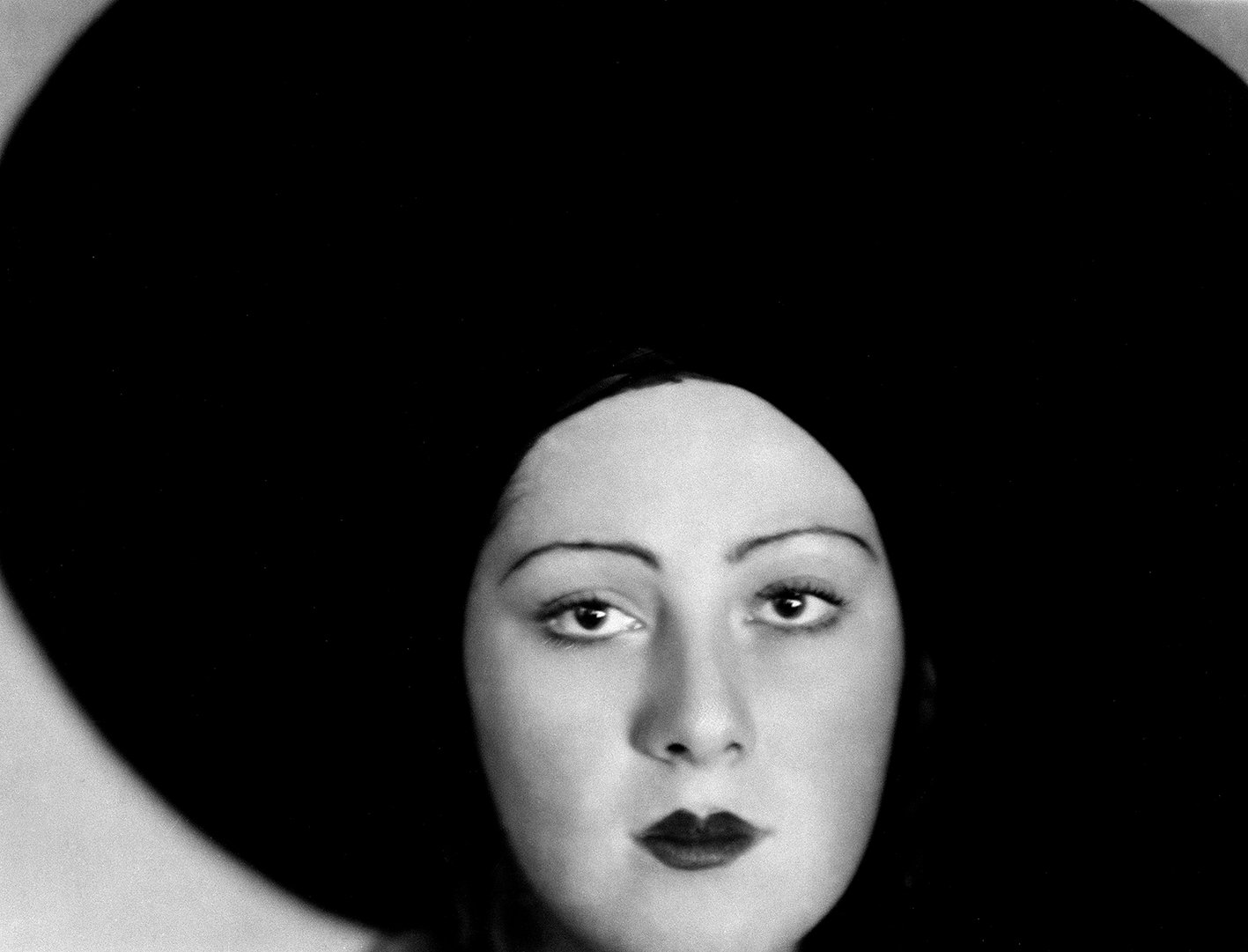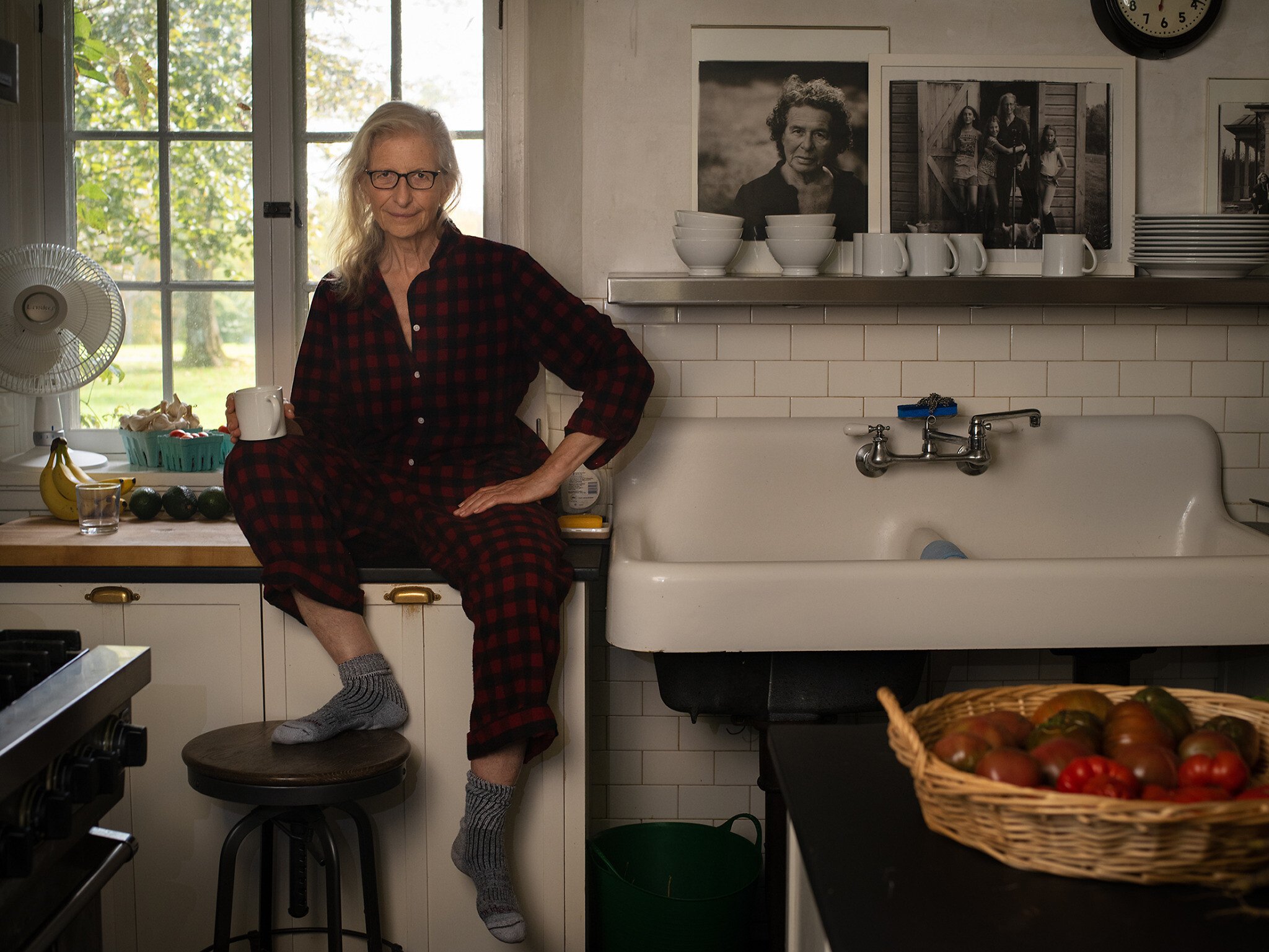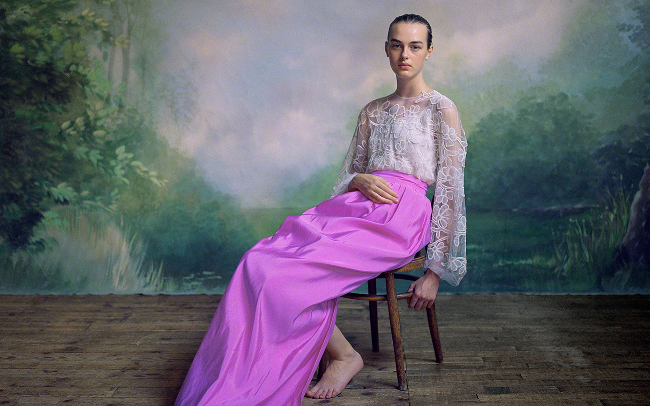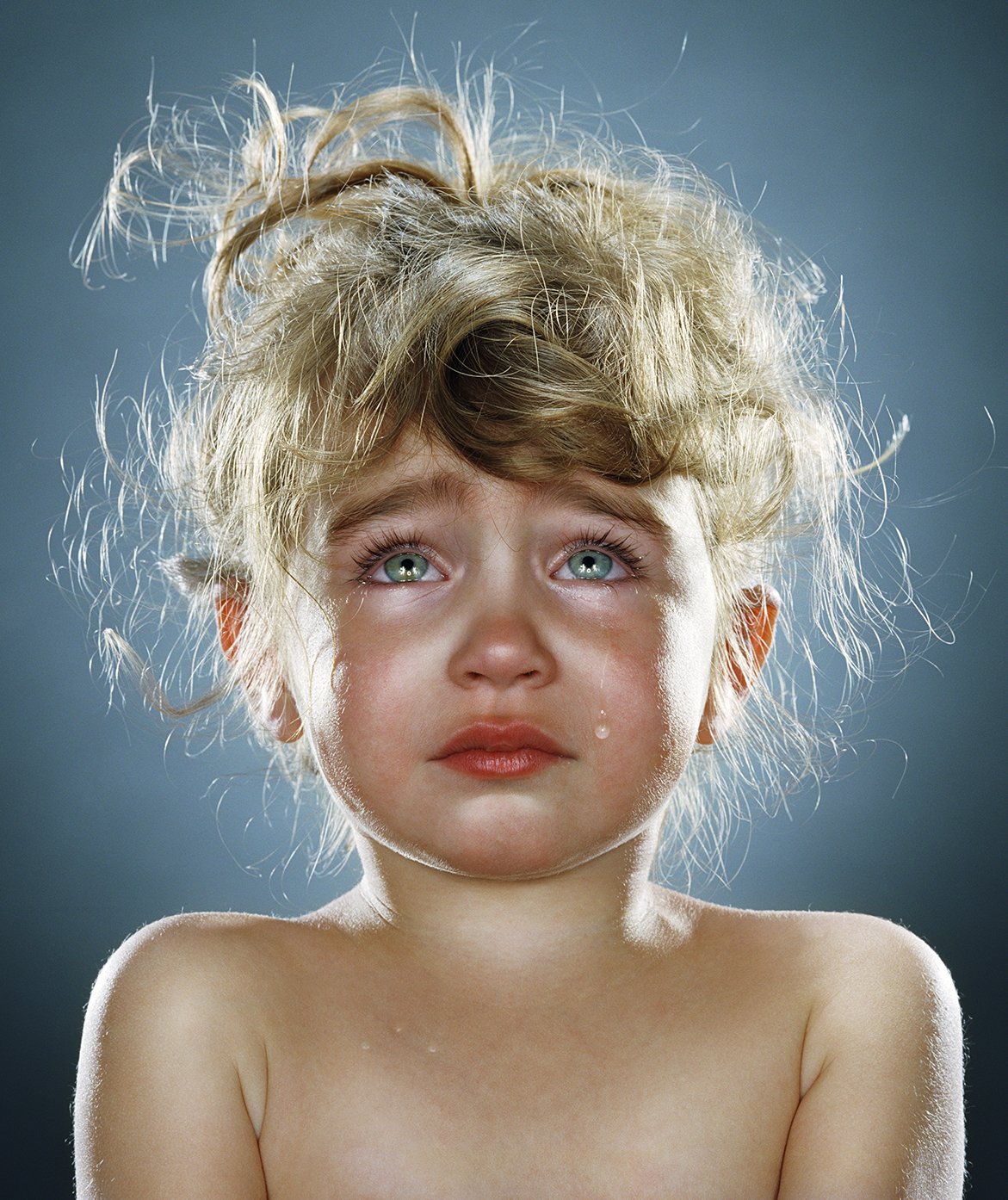Historic female photographers are matched with contemporary documentarians in Tel Aviv ANU’s ’20&20 – A Lens of Her Own’; curator: ‘The look in their eyes is the same’
You will receive email alerts from this author. Manage alert preferences on your profile page
You will no longer receive email alerts from this author. Manage alert preferences on your profile page
Jessica Steinberg, The Times of Israel's culture and lifestyles editor, covers the Sabra scene from south to north and back to the center
Female photographers from the past and present are placed side by side, front and center, in a new exhibit, “20&20 — A Lens of Her Own: Pioneering and Contemporary Women Photographers.”
The exhibit, which opened June 5 at ANU Museum of the Jewish People in Tel Aviv and will close in January 2027, looks at a window of European art history in between the two world wars, when a group of Jewish camerawomen led the world of photography.
The field of art photography became dominated by men following World War II, said ANU head curator Orit Shaham-Gover.
The exhibit revisits the era when a set of female Jewish photographers led the field, and pairs each of the 20 camerawomen with a contemporary female photographer who then chose specific photographs taken by their predecessors.
Each pair is displayed together in the exhibit, many with sets of photos that mirror one another in terms of content and imagery.
Get The Times of Israel's Daily Edition by email and never miss our top stories
By signing up, you agree to the terms
“Some of the photos may have been taken 100 years ago, but you look at them, like the photo of Jon [Polin] and Rachel [Goldberg-Polin] and the look in their eyes is the same,” said Shaham-Gover. Avishag Shaar-Yashuv, an Israeli photographer, took a photo of the parents of hostage Hersh Goldberg-Polin, before his Hamas captors killed their son in a tunnel in Gaza.
Photographer Avishag Shaar-Yashuv explains her work in ’20-20, A Lens of Her Own,’ a new exhibit that opened June 5, 2025 at ANU Museum of the Jewish People (Jessica Steinberg/Times of Israel)
Shaar-Yashuv was paired with Juliette Pirotte, a Polish photojournalist who documented and participated in the French Resistance during World War II, hiding a pistol in her pocket.
Pirotte’s imagery of women and children are echoed in photos taken by Shaar-Yashuv in the last 20 months, of women and children evacuated from the Gaza envelope region following the Hamas terrorist attack of October 7.
“It shows how history repeats itself,” said Shaar-Yashuv. “I wish Juliette could stand next to me and tell me her stories. We had so many photos in common, and that was so crazy to see.”
The exhibit opens with a homage wall of the original female photographers, many of whom lived long lives after World War II, noted curator Michal Houminer.
Each photographer has her story, and films interspersed between the exhibited photographs tell the curatorial process of each contemporary photographer.
Lotte Jacobi’s ‘Head of a Dancer’, 1929, exhibited in ’20-20, A Lens of Her Own,’ a new exhibit that opened June 5, 2025 at ANU Museum of the Jewish People (Lotte Jacobi/University of New Hampshire)
The contemporary photographers felt connected to their predecessors through their work, some because of small details, others due to the greater meanings of the period in which they were active.
Noa Sadka, a photographer and photo researcher, described learning the details of Lou Landauer’s life. Landauer arrived in pre-state Israel in 1910, before there was even a Hebrew word for photography.
Landauer, like Sadka, was drawn to capturing the small details in photos — a curtain blowing in the wind, a lizard crawling along a path.
“Everywhere I go, I look for the women,” said Gillian Laub, a contemporary American photographer who documents women in war zones and is one of the exhibition participants.
Annie Leibovitz in Rhinebeck, 2021, a Gillian Laub portrait exhibited in ’20-20, A Lens of Her Own,’ a new exhibit that opened June 5, 2025 at ANU Museum of the Jewish People (Credit Gillian Laub)
She was paired with Gisele Freud, a German-born, Jewish-French photographer and sociologist who documented 20th-century intellectuals and cultural icons using a Leica camera. Freud captured images of Frido Kahlo, James Joyce and Virginia Woolf, while Laub’s portrait subjects include renowned photographer Annie Leibovitz and Imelda Marcos.
Yva, the professional pseudonym of Else Ernestine Neuländer-Simon, a German Jewish photographer in Berlin renowned for her dreamlike, multiple-exposed images, was partnered with fashion photographer Michal Chelbin. Both are known for using models with unusual looks and settings.
‘Emma’ 2019 by photographer Michal Chelbin, now exhibited in ’20-20, A Lens of Her Own,’ a new exhibit that opened June 5, 2025 at ANU Museum of the Jewish People (Credit Michal Chelbin)
“She came to fashion through art and that’s a similar process for both of us,” said Chelbin. “It was an automatic connection.”
As Chelbin learned about Yva’s fate — the Berlin photographer was murdered by the Nazis in a concentration camp — Chelbin said she wondered if Israelis were facing the same apocalyptical moment.
American Jewish photographer Jill Greenberg, an early adopter of digital imaging and Photoshop in her portraiture, paired with Lucia Moholy, who also looked at photography differently, and whose husband, László Moholy-Nagy, often signed his name on her works.
A 2006 portrait by photographer Jill Greenberg, part of the ‘Unless’ show, and exhibited in ’20-20, A Lens of Her Own,’ which opened June 5, 2025, at ANU Museum of the Jewish People (Jill Greenberg)
“Women photographers are usually marginalized,” said Greenberg, describing some of the criticism she endured for her magnetic, larger-than-life portraits. “Being a woman is similar to being Jewish. It’s easier to ignore or hate us.”
The exhibition will include events with some of the participating photographers, including Jill Greenberg, Gillian Laub, Elinor Carucci, Rachel Papo, and Naomi Harris.
For more information about tickets and tours, go to the Anu site.
It's not (only) about you.
Supporting The Times of Israel isn’t a transaction for an online service, like subscribing to Netflix. The ToI Community is for people like you who care about a common good: ensuring that balanced, responsible coverage of Israel continues to be available to millions across the world, for free.
Sure, we'll remove all ads from your page and you'll unlock access to some excellent Community-only content. But your support gives you something more profound than that: the pride of joining something that really matters.
Join the Times of Israel Community Join our Community Already a member? Sign in to stop seeing this
If you’d like to comment, join
The Times of Israel Community.
